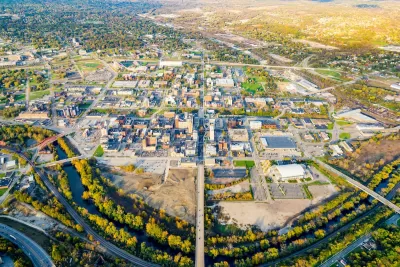Northeast Ohio is the last remaining bastion of housing affordability, according to an analysis from the National Association of Realtors.

Before the Covid-19 pandemic, 20 U.S. states were considered affordable home-buying markets for most households. Today, just two metro areas remain ‘affordable’ by that definition issued by the National Association of Realtors — and no entire states fit the bill. “Since the pandemic, two states, Montana and Idaho, have surpassed California as the most unaffordable states for local homebuyers, according to the analysis. Hawaii and Oregon round out the list of the five least affordable states.”
One of those regions is northeast Ohio, explains Tim Henderson in Stateline. “Youngstown is one of the last two metro areas in the country where a household with nearly any income should be able to find a single-family home they can afford to buy, according to an analysis of April data by the National Association of Realtors.”
According to the analysis, the Los Angeles metropolitan area, where the median single-family home price has surpassed $1 million, was the least affordable, while Youngstown and Akron rated as the most affordable. Montana and Idaho are the least affordable states, with housing prices exploding in both as remote workers flock to the region.
“Home prices have increased by 47% nationwide just since 2020, according to a June report by the Harvard Joint Center for Housing Studies. A major factor is that there aren’t many homes for sale.” Around the country, cities and states are looking to zoning reform as one avenue for boosting the housing supply to meet demand and promote denser development that could drive down the cost of housing.
FULL STORY: The nation’s last refuge for affordable homes is in Northeast Ohio

Alabama: Trump Terminates Settlements for Black Communities Harmed By Raw Sewage
Trump deemed the landmark civil rights agreement “illegal DEI and environmental justice policy.”

Planetizen Federal Action Tracker
A weekly monitor of how Trump’s orders and actions are impacting planners and planning in America.

How Atlanta Built 7,000 Housing Units in 3 Years
The city’s comprehensive, neighborhood-focused housing strategy focuses on identifying properties and land that can be repurposed for housing and encouraging development in underserved neighborhoods.

In Both Crashes and Crime, Public Transportation is Far Safer than Driving
Contrary to popular assumptions, public transportation has far lower crash and crime rates than automobile travel. For safer communities, improve and encourage transit travel.

Report: Zoning Reforms Should Complement Nashville’s Ambitious Transit Plan
Without reform, restrictive zoning codes will limit the impact of the city’s planned transit expansion and could exclude some of the residents who depend on transit the most.

Judge Orders Release of Frozen IRA, IIJA Funding
The decision is a victory for environmental groups who charged that freezing funds for critical infrastructure and disaster response programs caused “real and irreparable harm” to communities.
Urban Design for Planners 1: Software Tools
This six-course series explores essential urban design concepts using open source software and equips planners with the tools they need to participate fully in the urban design process.
Planning for Universal Design
Learn the tools for implementing Universal Design in planning regulations.
Jessamine County Fiscal Court
Caltrans
Institute for Housing and Urban Development Studies (IHS)
City of Grandview
Harvard GSD Executive Education
Toledo-Lucas County Plan Commissions
Salt Lake City
NYU Wagner Graduate School of Public Service





























